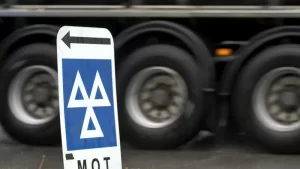Tassie broker on flood impacts and claims pressures

He said six local government areas including the cities of Launceston and Devonport were now eligible for relief payments. However, he added that Tasmania was not as devastated by flooding as the mainland’s east coast.
“We’re not anywhere near as badly hit as some of the areas of Victoria where whole towns have been completely wiped out by rivers bursting their banks,” said Luddington.
Read more: Insurers flooded with claims from inundated Tasmania
He said, so far, the flooding had generated very few claims for his brokerage and other areas in the south of the state. His firm, said Luddington, is dealing with a few home damage claims and one business claim.
“The only business I’ve got there is a campground up near Launceston that was flooded out,” he said. “So there’s some damage to the infrastructure there.”
Luddington said the main victims of the flooding to the north are residents of rural areas, including rural housing and farms.
“A lot of farmers don’t have their crops and animals insured for damage or loss because it’s so hard to get that sort of insurance,” said Luddington. “They probably [only] have farm buildings and their houses insured.”
During a visit to Tasmania this week, ICA CEO Andrew Hall said: “This has been the largest flood event in Australia’s history. The insurance system is dealing with an absolute avalanche at the moment of flood claims across the east coast of Australia.”
Luddington said in Tasmania a customer’s claims process can be delayed by two challenges. Many insurers, he said, have offshore rather than local offices for parts of their claims handling which has caused “teething problems” and claims delays. Any Tasmania-based staff for the big insurers can also lack the authority to approve claims. Instead, final claims approval comes from offices based on the mainland.
“We don’t have authority here,” he said. “In terms of getting claims process done and payments to our clients, it’s slightly frustrating.”
Luddington said, 30 years ago, insurance companies had claims staff with authority in Hobart.
“Everything would get processed fairly quickly,” he said.
On Wednesday, the ICA confirmed that about 400 Tasmanians had lodged claims with their insurance companies following the floods earlier this month. That number of claims is expected to balloon as more people return to their homes.
Hall said insurers have been processing insurance claims more slowly due to the significant number of claims and the lack of tradespeople available to assess the damage bill.
“Simple claims can be processed quickly, but inundation can take a long time,” Hall said, in an ABC News report. “The system is at peak capacity; we ask people to be patient; we’ll work through these claims as quickly as possible.”
The ICA confirmed that insurers had already paid out more than $5.3 billion this year, with more than 230,000 claims lodged since February.
The Bureau of Meteorology (BOM) recently predicted another 20 to 40 millimetres of rain over parts of Northern Tasmania this week.
“We need to be investing at least a billion dollars a year more in flood levees, in raising homes, and ultimately, going back and fixing past mistakes,” Hall said to the ABC. “There are areas of this country where houses were built that should never have been built and we need to make sure moving forward that development isn’t approved in areas that are prone to flood.”
Read next: How climate change is making Australian homes uninsurable
A recent study by the Climate Council warned that the increasing frequency and magnitude of natural catastrophes caused by climate change is rapidly pushing Australia to the brink of becoming an “uninsurable nation.”
The report by the climate change information non-profit group said this situation can drive insurance premiums to unaffordable levels and make coverage inaccessible in large parts of the country.
The council’s research estimated that one in 25 residential and commercial buildings – equivalent to more than half a million properties –will be “effectively uninsurable” by 2030, with the figures reaching as high as nine in 10 in the worst-impacted suburbs.
“Worsening extreme weather means increased costs of maintenance, repair, and replacement to properties – our homes, workplaces, and commercial buildings,” the council noted in the report. “As the risk of being affected by extreme weather events is increasing, insurers are raising premiums to cover the increased cost of claims and reinsurance.”





